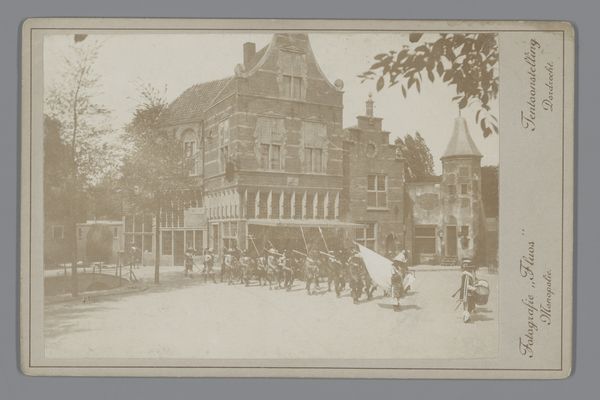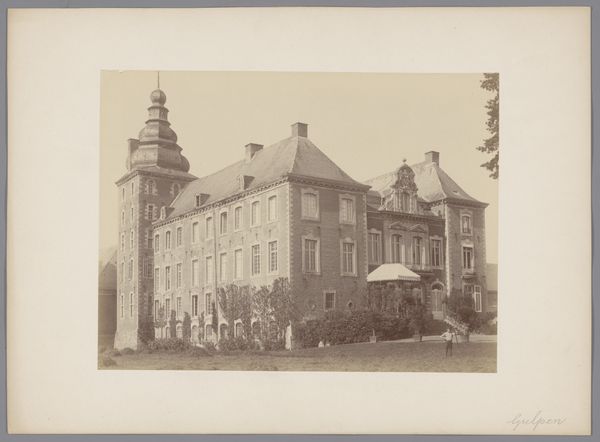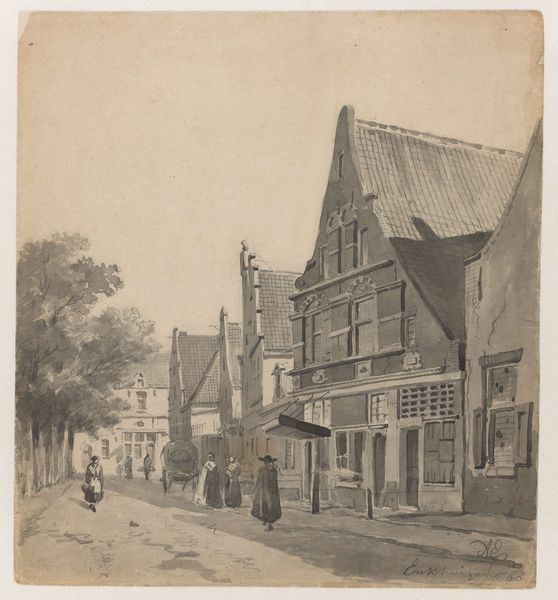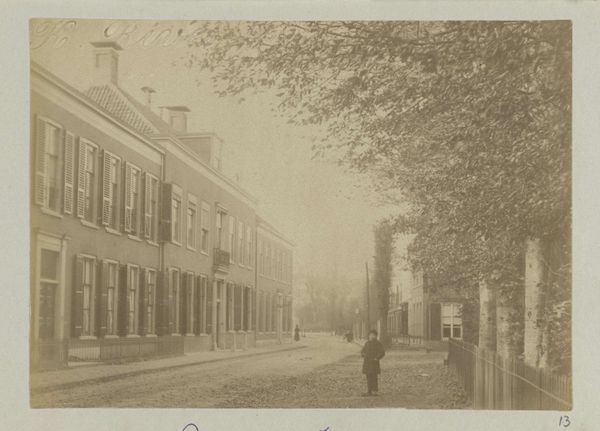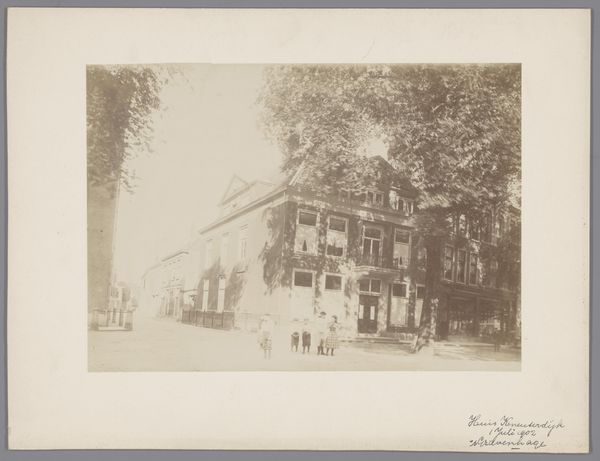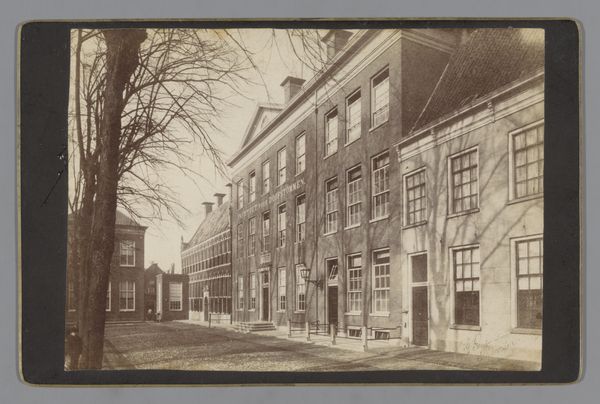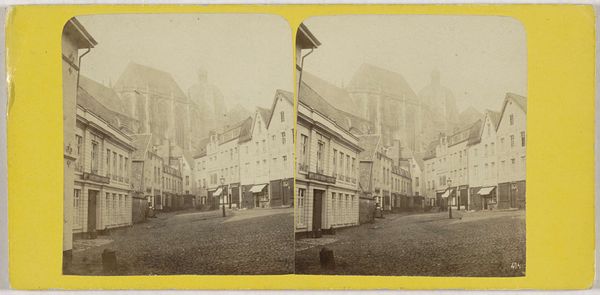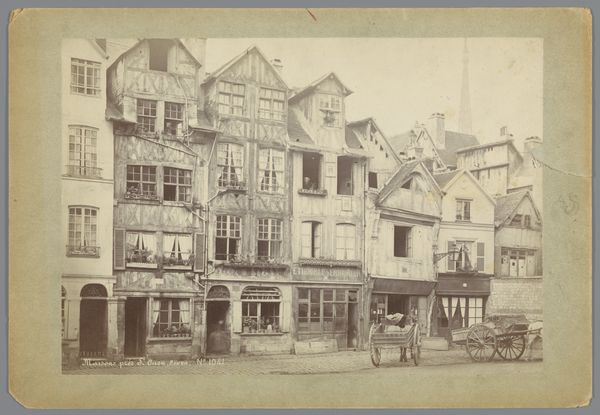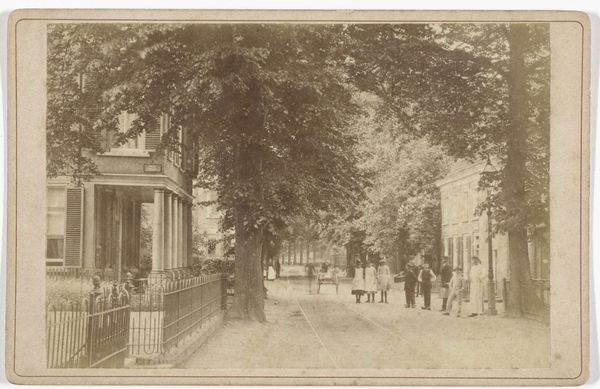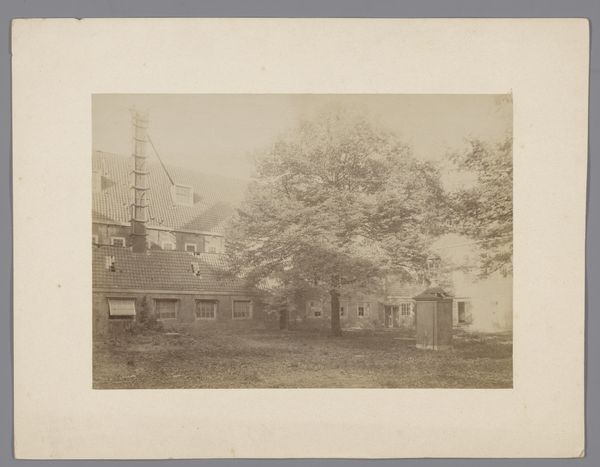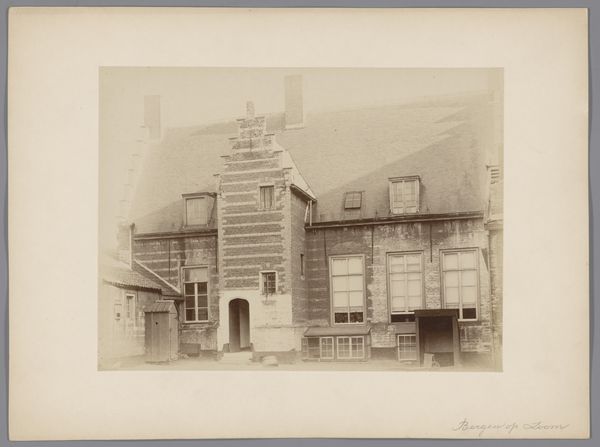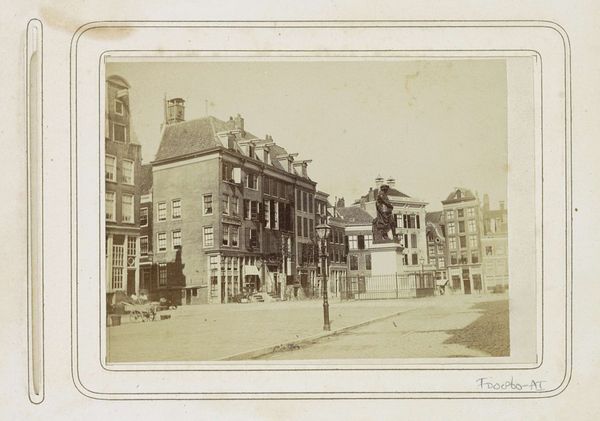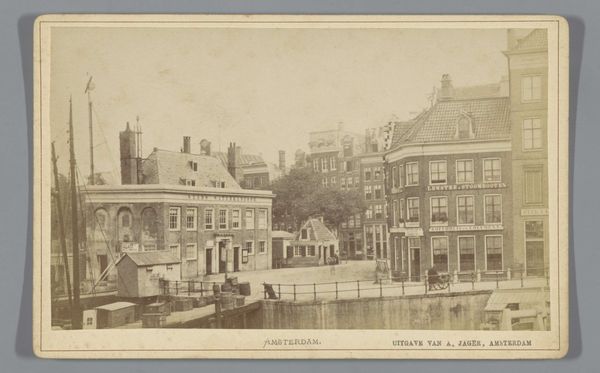
Fotoreproductie van een schilderij van een gezicht te Enkhuizen door Cornelis Springer 1860 - 1890
0:00
0:00
print, photography
# print
#
landscape
#
photography
#
cityscape
#
realism
Dimensions: height 275 mm, width 381 mm, height 280 mm, width 388 mm
Copyright: Rijks Museum: Open Domain
Curator: Here we have a photomechanical print of a painting by Cornelis Springer, created sometime between 1860 and 1890. The work depicts a street scene in Enkhuizen, a town in the Netherlands. Editor: It has such a tranquil quality. Despite the number of figures populating the scene, there’s an almost palpable sense of calm—a sort of pre-industrial serenity, wouldn't you agree? The tones are soft, muted. Curator: Absolutely. Springer was known for his accurate, detailed cityscapes that, while appearing realistic, were often idealized versions of reality. Editor: Idealized, in what way? I notice how class differences are softened; everyone seems to coexist quite harmoniously. Even the labor seems less arduous. Curator: Precisely. Springer often omitted elements he found displeasing or rearranged buildings to create a more aesthetically pleasing composition. His works catered to a growing middle class interested in romanticized images of Dutch history and prosperity. Editor: So, it's about shaping a particular narrative? Who is he really representing, who is he excluding in this rendition of Enkhuizen? Look at the labor by the docks—are their stories being told, or simply providing "atmosphere"? Curator: The politics of representation are certainly at play here. What appears as straightforward realism is actually a carefully constructed image that reflects the values and desires of a specific audience. This was a period of intense nationalism, and these images tapped into that sentiment. They reinforced an idea of a unified Dutch identity, even if that unity was largely imagined. Editor: It’s so interesting to consider the power dynamics embedded within what might seem a simple landscape. What resonates is the need for us to be critically aware of the socio-political backdrop when engaging with seemingly "objective" artwork of this period. Curator: Agreed. It reminds us that even seemingly neutral depictions of everyday life are loaded with cultural assumptions and ideological agendas. Editor: Thank you. It offers a richer understanding beyond just an appealing façade, making the viewing experience all the more poignant and insightful.
Comments
No comments
Be the first to comment and join the conversation on the ultimate creative platform.
